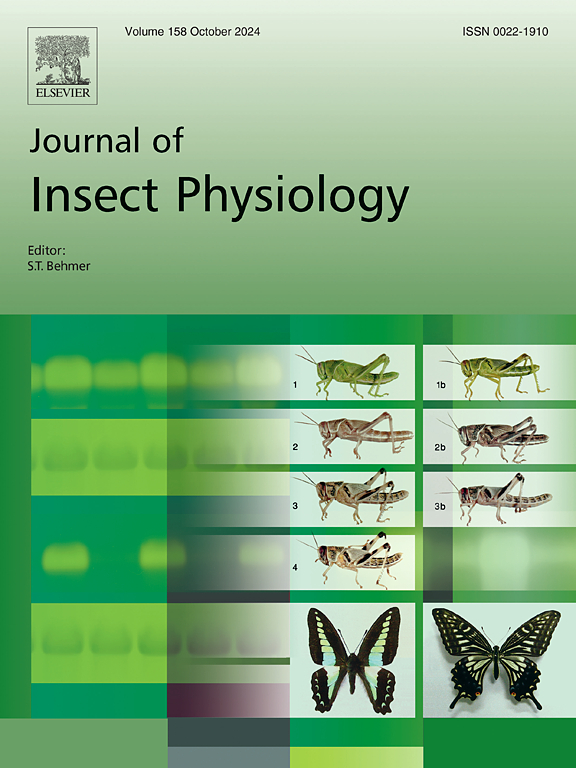Reviewing the female accessory glands of insects: Where they come from, what they do, and where they are going
IF 2.3
2区 农林科学
Q1 ENTOMOLOGY
引用次数: 0
Abstract
Female accessory glands (AGs) are structures associated with the reproductive system of many arthropods. In insects, the glands are mostly related to oviposition by secreting egg coatings and adhesives. Nevertheless, the AGs are versatile concerning their function, and show a high diversity of chemical compounds. Here we aim to review the AGs in insects, highlighting their distribution among the orders, origins, location, chemical nature of the secretions, development, endocrine control, and morphological features. We also propose dividing the glands into epidermal and mesodermal, according to their origin, avoiding the general term “accessory gland” to refer to non-homologous structures. The main functions of the AGs are: I) secretion of the egg coverings, adhesive, and lubricant, II) oviposition pheromones, III) egg fertilization, IV) antibiotic activity, V) nutrient production, VI) anti-desiccation/thermal tolerance. We also discuss the Dufour’s and venom glands of Hymenoptera and, based on recent studies, argue that they are not homologous to the AGs of other insects. Given the vast diversity of insect species and reproductive mechanisms, it is quite plausible that unknown functions of the AGs remain to be explored. Finally, the potential use of the glands as targets to control disease vectors, crop pests, and food supply is discussed. We expect our study to guide researchers interested in the function of AGs and how they evolved in the different insect groups.

回顾昆虫的雌性副腺体:它们从哪里来,它们做什么,它们去哪里
雌性附属腺(AGs)是许多节肢动物生殖系统的相关结构。在昆虫中,腺体主要通过分泌卵膜和黏合剂与产卵有关。然而,AGs的功能是多样的,其化学成分具有高度的多样性。本文综述了昆虫体内AGs的分类、起源、分布、分泌物化学性质、发育、内分泌调控及形态特征。我们还建议根据腺体的起源将其分为表皮腺和中胚层腺,避免使用“副腺”一词来指代非同源结构。AGs的主要功能有:1)卵膜、黏着剂和润滑剂的分泌,2)产卵信息素,3)卵细胞受精,4)抗生素活性,5)营养物质的产生,6)抗干燥/耐热性。我们还讨论了膜翅目昆虫的Dufour’s和毒液腺,并根据最近的研究,认为它们与其他昆虫的AGs不同源。鉴于昆虫种类和生殖机制的巨大多样性,AGs的未知功能仍有待探索。最后,讨论了这些腺体作为控制病媒、作物害虫和食物供应的目标的潜在用途。我们希望我们的研究能够引导研究人员对AGs的功能以及它们如何在不同昆虫群体中进化感兴趣。
本文章由计算机程序翻译,如有差异,请以英文原文为准。
求助全文
约1分钟内获得全文
求助全文
来源期刊

Journal of insect physiology
生物-昆虫学
CiteScore
4.50
自引率
4.50%
发文量
77
审稿时长
57 days
期刊介绍:
All aspects of insect physiology are published in this journal which will also accept papers on the physiology of other arthropods, if the referees consider the work to be of general interest. The coverage includes endocrinology (in relation to moulting, reproduction and metabolism), pheromones, neurobiology (cellular, integrative and developmental), physiological pharmacology, nutrition (food selection, digestion and absorption), homeostasis, excretion, reproduction and behaviour. Papers covering functional genomics and molecular approaches to physiological problems will also be included. Communications on structure and applied entomology can be published if the subject matter has an explicit bearing on the physiology of arthropods. Review articles and novel method papers are also welcomed.
 求助内容:
求助内容: 应助结果提醒方式:
应助结果提醒方式:


